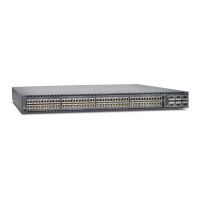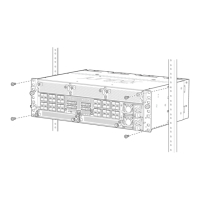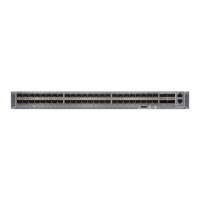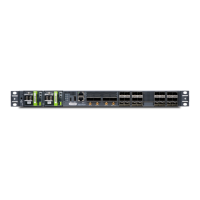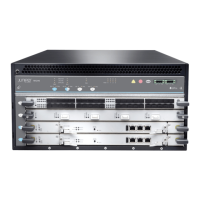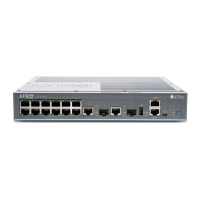}
then {
actions;
}
}
}
For more information about how to configure firewall filters, see the Routing Policies,
Firewall Filters, and Traffic Policers Feature Guide. For information on how to configure a
VPLS filter match condition, see “Firewall Filter Match Conditions for VPLS Traffic” on
page 1070.
To configure a filter for VPLS traffic, complete the following tasks:
•
Configuring an Interface-Specific Counter for VPLS on page 1272
•
Configuring an Action for the VPLS Filter on page 1272
•
Applying a VPLS Filter to an Interface on page 1272
Configuring an Interface-Specific Counter for VPLS
When you configure a firewall filter for VPLS and apply it to multiple interfaces, you can
specify individual counters specific to each interface. This allows you to collect separate
statistics on the traffic transiting each interface.
To generate an interface-specific counter for VPLS, you configure the interface-specific
statement. A separate instantiation of the filter is generated. This filter instance has a
different name (based on the interface name) and collects statistics on the interface
specified only.
To configure interface-specific counters, include the interface-specific statement at the
[edit firewall family vpls filter filter-name] hierarchy level:
[edit firewall family vpls filter filter-name]
interface-specific;
NOTE: The counter name is restricted to 24 bytes. If the renamed counter
exceeds this maximum length, it might be rejected.
For more information about the interface-specific statement and an example of how to
configure it, see the Routing Policies, Firewall Filters, and Traffic Policers Feature Guide.
Configuring an Action for the VPLS Filter
You can configure the following actions for a VPLS filter at the [edit firewall family vpls
filter filter-name term term-name then] hierarchy level: accept, count, discard,
forwarding-class, loss-priority, policer.
Applying a VPLS Filter to an Interface
To apply a VPLS filter to an interface, include the filter statement:
filter {
input input-filter-name;
Copyright © 2017, Juniper Networks, Inc.1272
ACX Series Universal Access Router Configuration Guide
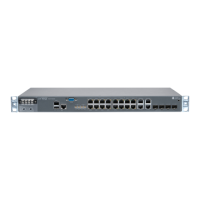
